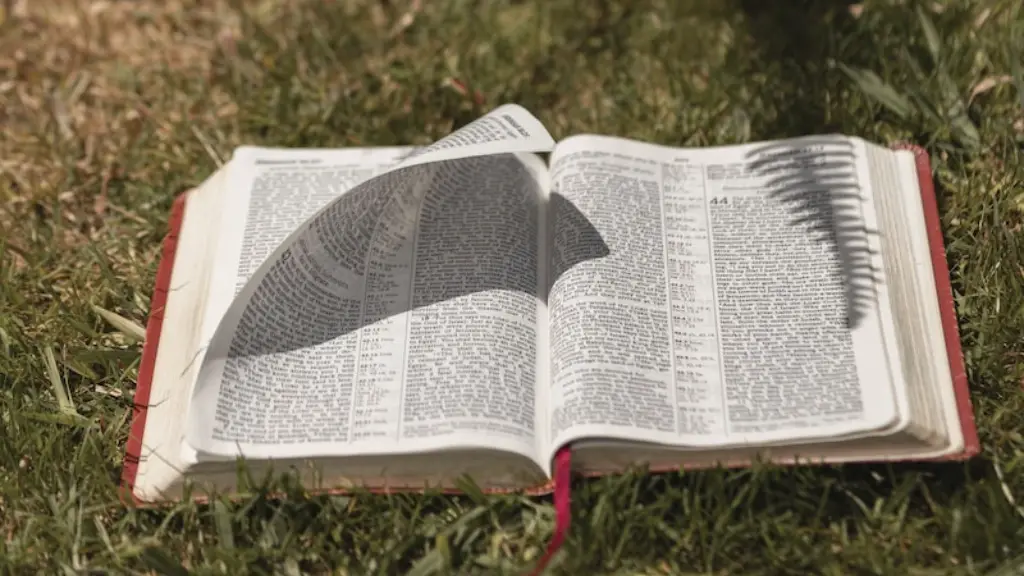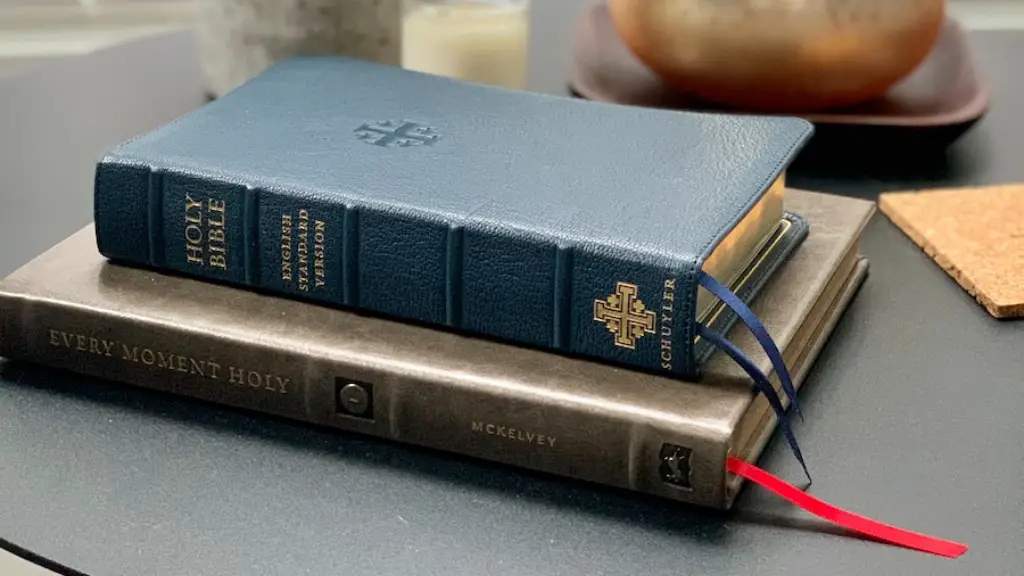Miriam is a figure of the Bible whose exact identity has been disputed by Biblical scholars. She is mentioned prominently in the Torah, the Five Books of Moses. According to the text, Miriam was the sister of Moses and Aaron and a prophetess in her own right. Born during Egypt’s captivity of the Israelites, she is celebrated as an important leader in their flight to freedom, although the role she played in their liberation is often debated and often overlooked. In this article, we will explore who Miriam is, the role she played in the story of Moses and the Israelites, and her legacy today.
Early Life and Legacy
Not much is known about Miriam’s upbringing and early life. We are informed, however, that she was born during Egypt’s enslavement of the Israelites and that she, alongside her siblings Moses and Aaron, fled from Egypt and made it all the way to Mt. Sinai. It is traditional to assume that Miriam shared a nurturing and loving relationship with her siblings, and that the three were very close in age, although no reliable data exists to corroborate this assumption. Miriam’s legacy is tied to this period, as she helped lead her people away from captivity.
We are informed in Exodus 2:4-8 that Miriam, upon seeing that her brother Moses had been rescued from the Nile River, went to Pharaoh’s daughter—the woman responsible for his rescue—and suggested that an Israelite wet-nurse be employed to take care of the infant. The Pharaoh’s daughter agreed and Miriam responded by fetching her mother Jochebed and employing her as the wet-nurse, thus saving Moses’ life and allowing him to be reunited with his family.
The Crossing of the Red Sea
The crossing of the Red Sea is probably the most famous example of Miriam’s leadership. In this story, we are informed that Pharaoh has relented and decided to cease pursuing the Israelites. However, the Egyptians changed their mind and decided to pursue them, trapping them between a sea and the desert. It is in this moment of crisis that Miriam steps in and leads the Israelites in the famous song of praise written in the Bible: “Sing to the Lord, for God has triumphed gloriously!” (Exodus 15). This is the first mention of Miriam as a leader of the Israelites and is a crucial moment in the story of their liberation.
Miriam’s Leadership and Legacy
Though little is known about Miriam beyond the Exodus narratives, she is nonetheless remembered by many Jews as a leader who stepped up to rescue her people during a time of crisis. Miriam’s legacy is centered on her courage and leadership during this period, as she helped lead her people to freedom and provided them with hope and assurance even in the darkest of times.
This legacy has been celebrated by many religious figures throughout history and remains an important part of Jewish faith and culture. Miriam’s story of liberation has been celebrated by countless generations, inspiring many to take up her mantle and follow in her footsteps. Though she is not always discussed in the same terms as her brother Moses, she nonetheless remains an important leader and exemplar in Jewish tradition.
Modern Interpretations of Miriam
Miriam’s story continues to have an effect on modern interpretations of her. Her story has been reinterpreted numerous times by authors, poets, musicians and other creatives, who view her as an icon of courage and leadership in the face of danger and persecution. Her story has been interpreted with contemporary insight, often placing her alongside other important historical figures such as Dorothy Day and Gandhi.
Many of these interpretations focus on her leadership and courage, as well as her willingness to step up and speak out about injustices, even in the face of opposition. Her story has been seen as a call to action for today’s generation, inspiring many to take a stand against wrongs and champion the cause of justice.
Miriam in Historical Context
As noted, little is known about Miriam beyond her involvement in the Exodus. This is often seen as a testament to her humility and determination, as she lived her life largely out of the limelight. What is known of her, however, points to a woman of great courage and perseverance, who not only stood up for her people, but also provided them with much needed safety and security. Her legacy is thus one of courage and strength, particularly in the face of oppressive forces.
Miriam is seen as an important figure in Jewish history and her story continues to be celebrated today. The reverence which many religious figures have held for her serves as a testament to her courage in the face of adversity, as well as her willingness to stand up and be the voice of her people in the midst of chaos. The lessons of her life continue to be remembered, inspiring many to take up her mantle and challenge oppression and injustice in the present day.
Miriam in Theology and Worship
Miriam also holds a special place in Jewish theology and worship, as her life and actions embody the importance of justice, courage, and faith in God. Her story is read in liturgies and sermons, illuminating her important messages in Jewish teachings and providing a way for believers to connect with her legacy.
Additionally, Miriam has been a prominent figure in the iconography and art of Judaism, appearing in paintings, sculptures, and other artwork. This artwork often celebrates her courage in the face of overwhelming odds, as well as her unwavering loyalty and devotion to her people. Her legacy is thus not only connected to an important moment in Jewish history, but also to the faith which she so deeply believed in and exemplified.
Prophecies Associated With Miriam
Miriam’s legacy has also been connected to prophecy and her prophetic nature is celebrated in many circles. According to some interpretations of the Bible, Miriam was gifted with a special insight which enabled her to understand God’s will and guide her people towards freedom and justice. This has been interpreted through modern lenses as a call to action and her prophetic nature celebrated as an important part of her legacy.
Miriam’s prophetic nature is also reflected in her presence at important moments in the story of the Exodus. She was present when the Israelites accepted the Ten Commandments on Mt. Sinai, was present at the crossing of the Red Sea and was a leader in singing the songs of victory and praise. Her prophetic insight is said to have enabled her to understand the importance of these moments and their connection to a larger divine plan, and thus prepare her people for the important work that lay ahead of them.
Miriam’s Symbolism
Miriam is often seen as a symbol of hope, courage and faith in the face of limitless odds, and of loyalty and devotion in the midst of a journey fraught with peril. In many interpretations, her courage and faith are a testament to her strength and commitment, as she faced off against a powerful enemy and guided her people out of the clutches of oppression.
Her story can also be seen as a metaphor for all those who stand up and speak out against oppressors, in both religious and political contexts, no matter the odds. This holds an even more profound meaning in today’s global climate, as many struggle to protect their freedoms and stand up against injustice.
The story of Miriam is thus an important part of Jewish history and is celebrated today, as it was thousands of years ago. Her courage and leadership will always remain an example of hope and perseverance and her legacy celebrated far and wide, both in religious and secular circles.




